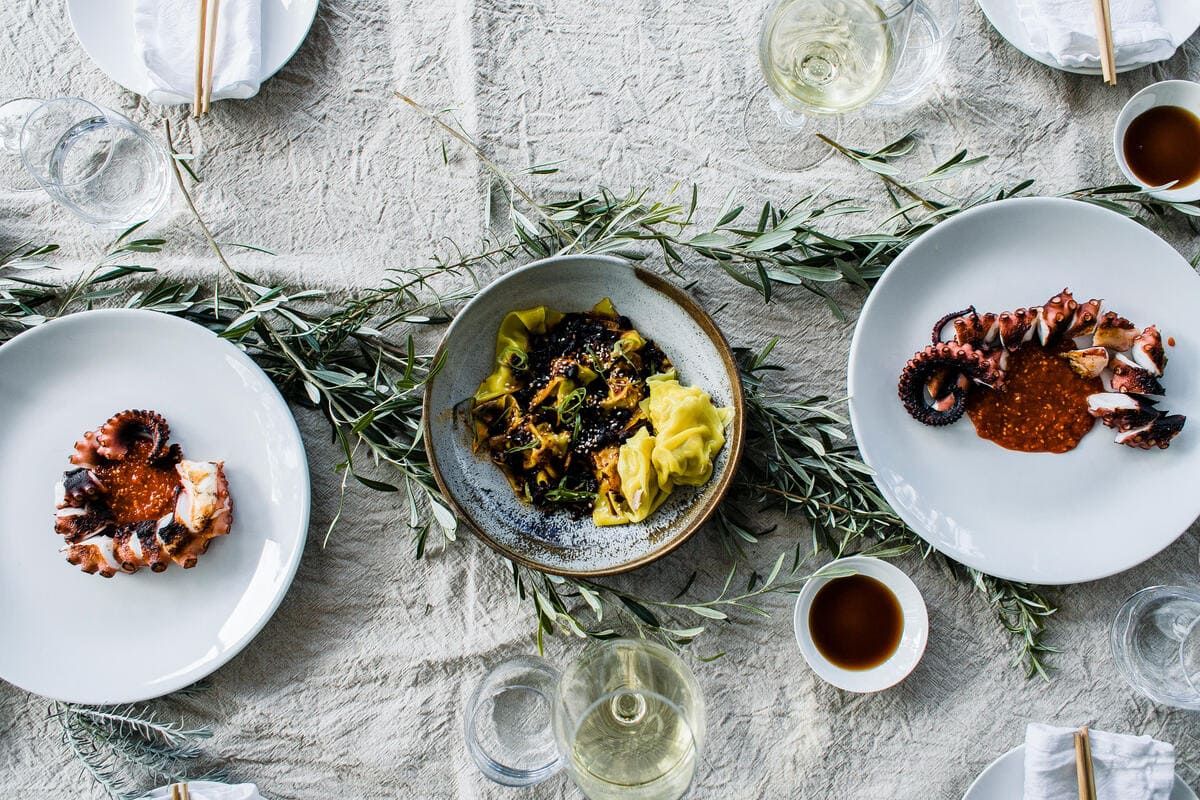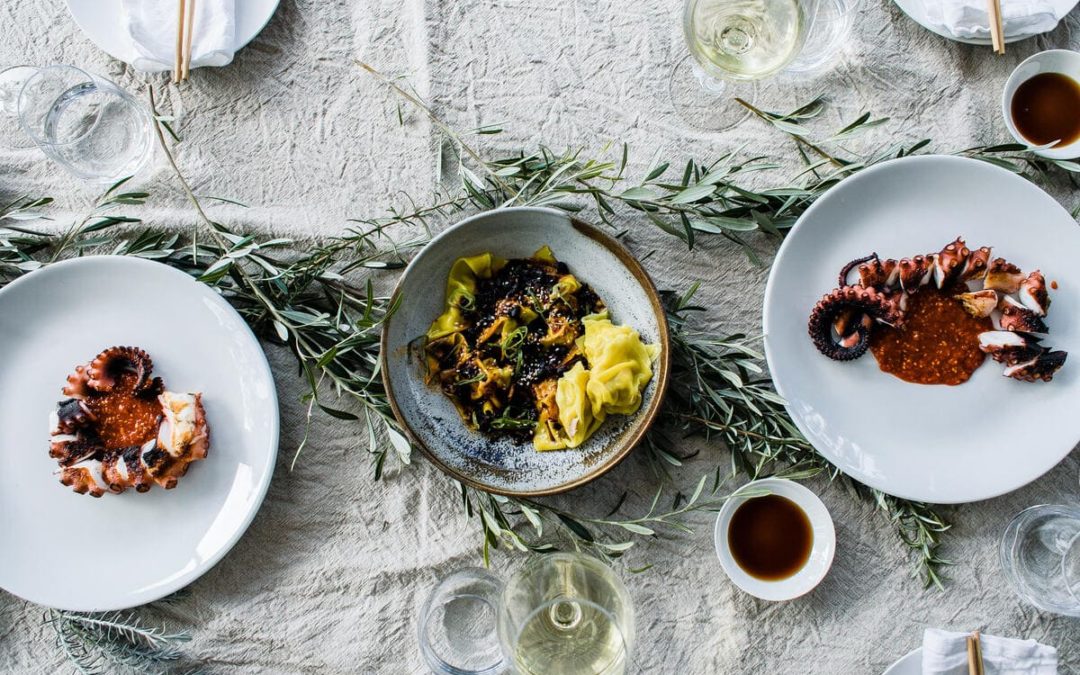Food and Wine Pairing Guide
One of the reasons we enjoy pairing wines with food is that it can add to the sensory experience of wine drinking. Food influences the way wines taste, and vice versa. The more successful you are with pairings, the more enjoyment and excitement you will derive from the food and wine than either would provide separately. It’s also a fun and easy way to stretch your culinary creativity!

General Pairing Guidelines
Intensity.
Are the flavors weak, moderate, or strong? A subtle wine, such as German Riesling, will be overwhelmed by assertively seasoned food. At the same time, a jammy, spicy Zinfandel will do the same to a milder food, such as a lightly seasoned pork tenderloin.
Weight.
Match the weight of food and wine. The weight refers mainly to mouthfeel and texture—how rich, full-bodied, light, or ethereal the food or wine feels. How the food is prepared has a huge impact on the intensity, weight, and, often, the chemical composition of the dish.
Dominant Flavor.
Focus on the dish’s dominant flavor, which is often the seasoning or sauce, not the main ingredient. The only guideline for determining this is: what’s the first/main impression?
Complement or Contrast.
Your choice depends on the effect you want to achieve. Contrasting is generally more applicable to white wines with their higher acidity levels; reds rely more on bridge ingredients such as spices or sauces. It can work for red wines with an earthy/fruity combination if it matches the intensity. The texture is key—think about the mouthfeel of the food. Consider pairing sweet/sour, creamy/crisp, rich/tart.
Complexity.
To appreciate the full potential of a complex dish, pair it with simple wine. Likewise, to relish in the complexities of excellent wine, pair it with a simple meal. Too many flavors and layers muddle the palate. If one of the two partners is exceptional, let it shine. Both can’t be dominant; have the subtlety and nuance of one bring out the strengths of the other.
Acidity.
Wine needs acidity to pair well with food. Food high in acidity needs a wine with high acidity and wine high in acidity needs food to be enjoyed. A classic example is traditional Chianti Classico, which is uncompromisingly tart on its own and shines with pasta in a tomato-based sauce because the tomatoes’ acidity balances the wine’s acidity.
Salt, Pepper, and Other Spices.
Slightly sweet whites go well with salty foods (sweet/sour); tannic wines generally do not (salt makes the wine taste bitter.) If you’re having wine with something spicy, go for a lower-alcohol, fruity wine, like Riesling. Spicy whites, such as Riesling and Sauvignon Blanc, are excellent with most Asian foods. Low-tannin, fruity reds, such as Grenache could work too.
Fat Moderates Tannins.
Fat—animal or dairy—moderates tannins. For a low-fat dish, use a low-tannin wine, like filet of sole with Sauvignon Blanc. For a high-fat dish, use a high-tannin wine, like rack of lamb with Cabernet Sauvignon.
Use the "Bridge."
Wine and food are often thought to be a pair because of their similarities. However, they don’t need to have the same flavors to achieve harmony. A “bridge” ingredient in the food, usually not the main flavor, can tie the two together.
Additional Considerations
Cooking With Wine.
If wine is used in the sauce, use it in the glass!
Stay Local.
When in doubt, food and wine from the same region have a natural affinity for each other.
Enjoyment Order.
- Dry before sweet
- Low-alcohol before high-alcohol
- Sparkling before still
- Young before old
- Low tannin before high tannin
Don’t save the best for last! If you’ve got something great, be sure to appreciate it.
Key Takeaway
At the end of the day, there are no hard rules for pairing food and wine. Enjoy the wine you love with the foods you love. Having said that, if you open yourself to try new things, you might just discover an unexpected ingredient that your taste buds enjoy. A great way to start is by trying new recipes!

